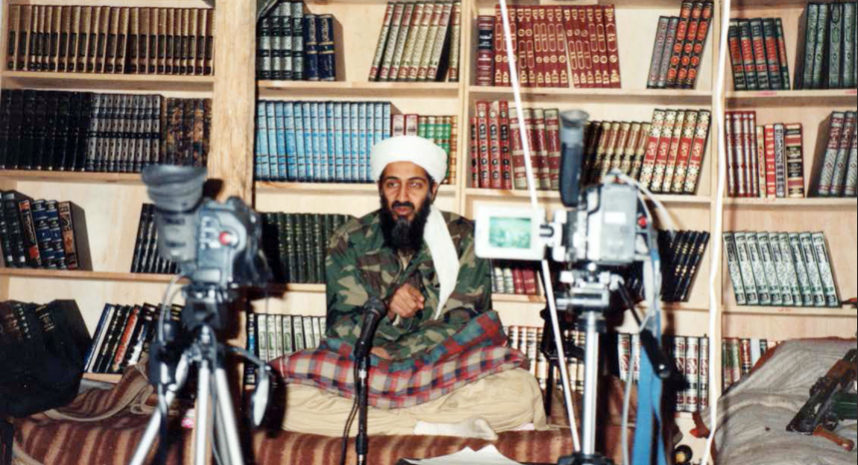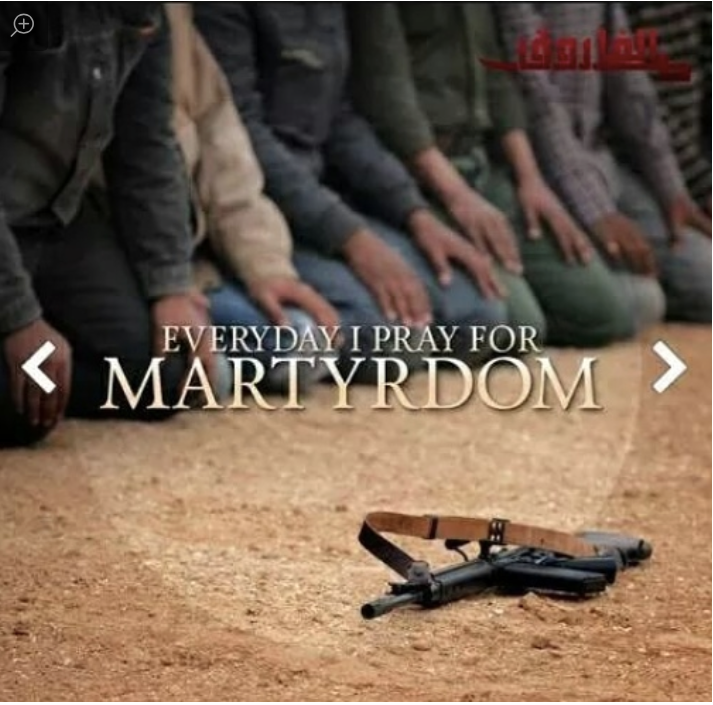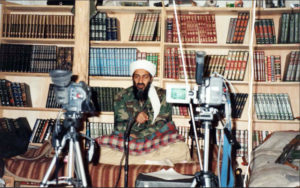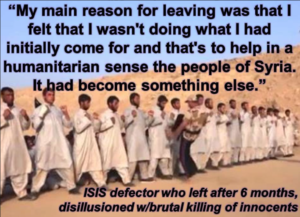Meme Wars
By David DeVoss
In the years between 9/ll and the U.S. invasion of Iraq, Osama bin Laden and his lieutenants publicized Al Qaeda’s beliefs, demands and atrocities with a succession of crudely produced audio and videotapes sent to Al Jazeera and other networks.
By March 2004, however, the way that news and ideas were communicated was changing. The hierarchy of reporters and editors who decided what news was and how it would be presented was being challenged by social media that had no hierarchy or filters at all.
Launched in 2004, Facebook, a social networking service that allowed friends to share personal information, was followed a year later by YouTube, a seemingly infinite repository of videos that lived forever in the Internet cloud. Then came Twitter, a real time messaging service that offered a global audience to those with something to say who could say something briefly. These and other technologies meant that an anonymous jihadist with a laptop could reach more people than all of the world’s leading newspapers combined. And in 2007 when smart phones started becoming popular he didn’t even need a laptop.
Osama bin Laden recognized the power of social media long before many democratically elected leaders. “The wide-scale spread of jihadist ideology, especially on the Internet, and the tremendous number of young people who frequent jihadist websites are major achievements for jihad,” Bin Laden wrote in a 2010 letter discovered by Seal Team 6 inside his Abbottabad compound.
Today, thousands of jihadists prowl the web promoting their brand of Salafist Islam while trying to convince young Muslims to travel to Syria and Iraq. Teens curious about the Islamic State can go to Ask.fm where questions about Sharia law will be answered promptly in English by young British jihadis of the same age. Tumblr, a blogging site, hosts essays on how to build and position IEDs. Those turned off by videos of crucifixions and beheadings, can head for Instagram to see photos of terrorists handing out bread, sweeping the streets and playing with kittens. When sensitive information such as how to travel to Syria and who to contact upon arrival needs to be exchanged ISIS bloggers communicate with prospective recruits via private messaging apps such as WhatsApp, Kik, Paltalk and Telegram.
In theory, it’s easy to monitor the text traffic of ISIS sympathizers using text analysis. Lexalytics is a Boston company whose in-house and cloud-based sentiment and intent analysis software can process hundreds of millions of documents a day to understand what people using social media are thinking. In the hands of a social media management company like Sprinklr, Lexalytics software can parse the digital zeitgeist for an airline, hotel company or government security office. “We process the equivalent of the entire Twitter stream several times a day to know what’s trending,” says Lexalytics CEO Jeff Catlin. “The Boston Globe uses our product to analyze the changing sentiments of New Hampshire voters.”
ISIS manages to avoid analysis of sensitive communications because of Tails (the Amnesic Incognito Live System) and TOR, two complementary operating systems that encrypt files, emails and instant messaging so that locations and browsing habits remain anonymous. TOR keeps identities secret by bouncing communications around a network of relays so that organizations can share information without compromising their privacy. The NSA describes the programs, which are open source and freely downloadable, as a “major threat” to its mission and potentially “catastrophic” when used with other privacy tools. What it does not say is that TOR was developed by the U.S. Navy Research Laboratory and enhanced by DARPA, the Defense Advanced Research Projects Agency inside the Department of Defense.
According to a Twitter census compiled last March by the Brookings Project on U.S. Relations with the Islamic World, ISIS operates between 46,000 to 70,000 Twitter accounts, each of which has around 1,000 followers. Several security companies believe ISIS sends out more than 90,000 messages a day. About 20% of terrorist messaging is in English, the language used by Huda Muthawny, an Alabama women who targets Muslim girls in the U.S. with the message that the IS “caliphate” is a utopian state where Muslims will find status and belonging.
ISIS recruitment has been grimly successful. Of the 32,000 foreigners estimated by the CIA to have gone to Syria, upwards of 4,000 may be from Europe and the West.
ISIS YouTube videos are horrific, but its messaging on Facebook and Instagram is weirdly compelling. Steely-eyed soldiers in tailored fatigues almost seem daring as they vow to accept martyrdom. By contract, Washington’s counter terrorism program called “Think Again, Turn Away” feature blurry photos, jumbled typefaces and inept prose.
“I know something about memes,” Sen. Cory Booker (D-NJ) sputtered at a meeting this past summer of the Senate Committee on Homeland Security and Governmental Affairs. “Look at ISIS fancy memes compared to what we’re not doing.” In a rare show of bipartisanship, committee chairman Ron Johnson (R-WI.) was in full agreement. “We invented the social network sites,” he said. “We’ve got Hollywood. We’ve got the capabilities to blow these guys out of the water from the standpoint of communications.”
The Obama Administration created the Center for Strategic Counterterroriam Communications in 2010 but Ambassador Alberto Fernandez, its former director, concedes his operation was underfunded, unfocused and unsuccessful. “Our goal was to discover what terrorists were saying on social media, but we had no mandate to take things down,” he admits, adding that his entire budget for three years was less than the cost of one drone.
Now a vice-president for the Middle East Muslim Research Institute, Fernandez says the administration didn’t take ISIS messaging seriously. After the death of Bin Laden Obama thought jihadist terrorism was yesterday’s news. “His ‘JV team’ remark reflected that point of view. Washington ties itself in knots about meta-data and the black stuff, but terrorist propaganda is all in plain sight. The government just needs the will to engage.”
There are signs terrorist propaganda may be losing some of its appeal. In a year end statement appearing on ISIS’ social media platforms “caliph” Abu Bakr al-Baghdadi urged Muslims to defend the IS by attacking disbelievers. Instead of support, however, his appeal largely met with sarcasm and a renewed effort by some Muslim Americans to differentiate themselves from the Islamism practiced by ISIS.
Some Muslim hackers attempt to embarrass ISIS supporters by destroying their digital infrastructure or doxing the identities of their supporters. But most prefer simply to change the conversation by creating new memes. Affinis Labs in Northern Virginia sponsored hackathons in Abu Dhabi and Sydney at the end of 2015. It will host four more this month in Uganda, California, London and Marrakesh. The goal is to devise new mobile apps and websites that communicate Islam’s true values in a way that resonates with young people.
“Countering ISIS’ revolutionary fervor with passionate moderation doesn’t work,” says Affinis co-founder Shahed Amanullah, who refuses government assistance despite his former job as a Department of State advisor in charge of digital diplomacy to young Muslims around the world. “We’re more effective working with communities without the government in the back seat or even in the car.”
According to Shahed, the San Bernardino massacre made ISIS evil tangible and roused America’s 3,000,000 Muslims to the fact that their youth must be empowered not embattled. Toward that end Affinis is incubating 11 startups and mobile applications that support normal living opposed to ISIS. ComeBack2Us is a digital underground railroad being developed for people who want to leave Syria and return home. It contains a message service so that families can communicate with a son or daughter pondering a break from ISIS. Ishqr is an online dating site for millennial Muslims in America who want to keep the faith yet avoid arranged marriages. LaunchGood is a faith-based online crowdfunding platform in Detroit that is supporting Muslim entrepreneurs in 20 countries. The company calls itself a “Global Force for Good” and backs up those words by raising $25,000 for eight black Southern churches destroyed by fire since the nine murders in Charleston, SC in June 2015.
LaunchGood CEO Chris Abdur-Rahman Blauvelt, 31, was raised a Presbyterian in Michigan and converted to Islam 15 years ago. He doesn’t believe anti-ISIS fatwas from elderly religious scholars have much effect on terrorism. “We need to meet the youth where they are – online and in social media,” he says. “The world’s largest Muslim community is not Indonesia. It is the community of Muslims who are gathering online and exchanging ideas.”
The flow of misguided youths to Syria is far from over, but American Muslims gradually are taking back the Internet. AverageMohamed is an online animated comic book for children developed by a 40-year old Somali-American gas station owner in Minneapolis. Cartoons on the site denounce suicide bombs, slavery, ISIS beheadings and the Paris attacks and end with the slogan: “Peace up – extremist thinking out.” Another web program preaching multicultural peace is Shakes&Shaykhs, a series of YouTube videos similar to Jerry Seinfeld’s Comedians in Cars Drinking Coffee. Produced by Ali Baluch, a 26-year old Afghan American videographer, the 26-minute conversations mix Islamic precepts with American dating and television shows and take place in coffee shops.
The counter-terrorism social media campaign spearheaded by American Muslims is spreading overseas. Abdullah X is a British YouTube cartoon that challenges ISIS behavior with positive Islamic teachings. #NotInMyName, is a Twitter campaign that encourages young Muslims around the world contribute YouTube videos explaining why ISIS does not represent them. YouTube also hosts short anti-terrorist songs, cartoons and comedy sketches #OpenYourEyes. The videos challenging violent extremism target 16 to 25-year olds and have attracted nearly one million views. But the greatest indicator of changing attitudes is the fact that ISIS now is subject to comedic ridicule. A darkly hilarious ISIS Blooper made by Israeli comedians shows a botched beheading in which the Jihadi John character repeatedly mispronounces words in his script, slices his hand when attempting the execution and accidentally allows his kneeling victim to stand up and run away.
The soldiers in America’s digital war on ISIS are tech-savvy millennials like Ali Ashraf Jakvani, 24, a social media expert who divides his time between California and Oman. Ask Ali if American Muslims can defeat ISIS terrorists in the fight for Islamic youth he will smile and nod affirmatively. “This phone is a weapon,” he says, “and it is more powerful than any gun.”![]()
_________________
East-West News Service editor David DeVoss spent more than four years in Iraq working for USAID development programs.





